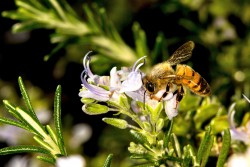 The final merger between Farmers Cooperative Company (FC) and West Central Cooperatives has been completed. Landus Cooperative is officially established.
The final merger between Farmers Cooperative Company (FC) and West Central Cooperatives has been completed. Landus Cooperative is officially established.
The new farmer-owned agricultural cooperative is headquartered in Ames, Iowa. They have more than 725 full-time employees in more than 70 locations with approximately 7,000 members.
“While today’s signing ceremony to formalize Landus Cooperativeze is historic for our employees, our communities and the greater cooperative industry, we are focused on what this merger means for our customers and members going forward,” said newly appointed Chief Executive Officer, Milan Kucerak who formerly served as President and CEO at West Central.
“Merging two strong cooperatives allows further diversification throughout the supply chain and opens local and global opportunities for added value and growth on behalf of our members,” added Kucerak. “In short, the purpose of this merger is to make two cooperative organizations better than either one could be separately for employees, members and customers.”
The new board members, executive team and information about the company can be found on the interim website, LandusCooperative.com. The full integration of both organization is still a work in progress, although preparation has been going on since the first membership vote was announced. The new logo will begin to appear, but the integration of accounting and operational systems will be unfolding over the next several months.
Kucerak stressed the cooperative’s transition plans for customers. “We plan to make this transition as easy and streamlined for our customers and their operations as possible.”
The new cooperative is n ow one of the largest grain storage companies in North America and has shuttle-loading access on all seven of Iowa’s major rail lines. They offer full precision agronomy services,expert marketing services and have a proprietary brand of soybeans along with their corn and soybean processing facility.
 The Renewable Fuels Association (RFA) took part in a recent trade mission to Peru led by Agriculture Secretary Tom Vilsack which included discussions about increasing cooperation with that country when it comes to ethanol production and exports.
The Renewable Fuels Association (RFA) took part in a recent trade mission to Peru led by Agriculture Secretary Tom Vilsack which included discussions about increasing cooperation with that country when it comes to ethanol production and exports. 











